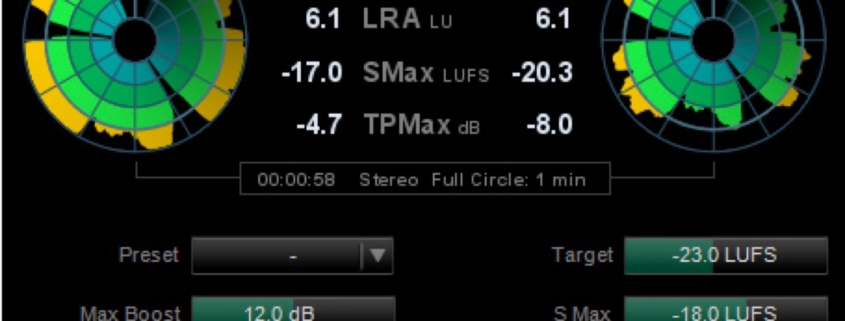
Find yourself a suitable tool for accurately measuring you levels in LKFS / LUFS / EBU128. These may come in the forms of hardware unit or software plugins. All these norms do carry the same idea; provide your sound with some room to breathe. For a long long time before this reference format came up, sound levels for audio productions where all over the place, mostly hitting the ceiling real hard and full time. Although there is no way in a distribution digital format to go over 0dB full scale, people still where busy trying. Thus giving the entire music production of the era a dull and fatiguing sound. Which was silly because radio stations and now internet content provider all had/have their own ways of enforcing level restrictions on their side, squashing even more these already lifeless tracks. Hence one more incentive for giving your masters some room to breathe to start with, as these will sound much better, live or broadcasted and compressed.
Recommended target levels, by industry/regulating bodies/content providers:
EBU R128, broadcasting Europe : -23 dB for TV
ITU, BS.1770, International broadcasting: -23 dB for TV
AES Society for audio streaming: -20 to -16dB
FM & DAB Radio: -15 dB
Apple Music, Google: -16 LUFS
Amazon Alexa, Spotify and Tidal: -14 LUFS
Youtube: -13 LUFS
But for these levels to be correctly implemented you must use a meter that incorporate time in the measurement, because level “multiplied” by time is the only mean of having a representative idea of the loudness of a piece of audio.
Waves, TC Electronic, iZotope, all provide handy LUFS meter software plug-ins. TC version is shown above.
Depending on the target format, choose one reference level and stick to it. If you are not at ease with the process and terminology, then leave you mixes with lots of extra headroom available, no problem if for now these sound “quiet”, then head over to sites such as MasteringBox, Cloudbounce or Landr. They will master your tracks transparently for you, with respect to the good practices expressed above.
More useful and detailed insight on the topic:
This post is also available in: Anglais


